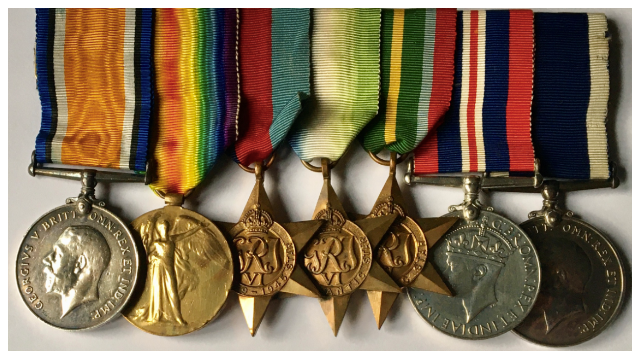The allure of collecting medals lies not only in their historical significance but also in the challenge of uncovering rare and authentic pieces that add value to your collection. However, the market is rife with reproductions and counterfeit items, making it essential for collectors to possess the knowledge and skills necessary to discern genuine medals for sale from the multitude of imitations. In this guide, we will explore the key aspects of identifying rare and authentic medals, offering you the tools to enhance your collection with valuable and historically significant pieces.
Understanding the Historical Context of Medals
To identify rare and authentic medals for sale, it is crucial to first understand the historical context in which these medals were created and awarded. Medals have been used throughout history to commemorate significant events, honour military service, and recognise individual achievements. The value of a medal is often closely tied to its historical significance, with medals associated with notable events or figures typically commanding higher prices.
Researching the period in which a medal was issued, understanding the circumstances surrounding its creation, and recognising the significance of the recipient can provide valuable insights into its rarity and authenticity. For example, medals awarded during major conflicts such as the First and Second World Wars are often of particular interest to collectors due to their historical importance. Familiarising yourself with the key historical events and periods that are most sought after in the medal-collecting community will help you to identify valuable pieces.
Assessing the Physical Characteristics of Medals
When evaluating medals for sale, careful examination of their physical characteristics is essential. Authentic medals are typically made from high-quality materials such as silver, bronze, or gold, and are often intricately designed and engraved. The weight, texture, and finish of a medal can provide clues about its authenticity. For instance, genuine medals often exhibit a patina that develops over time, adding to their character and historical value.
Pay close attention to the details of the design, such as the quality of the engraving, the precision of the lettering, and the sharpness of the imagery. Inauthentic or reproduction medals may lack the fine details present in originals and may appear less refined in their craftsmanship. Additionally, examine the edges of the medal for any signs of wear or tooling marks that could indicate tampering or forgery. A magnifying glass or loupe can be particularly useful in scrutinising these details.
Recognising Maker’s Marks and Hallmarks
One of the most reliable ways to confirm the authenticity of medals for sale is by examining the maker’s marks and hallmarks. These marks, often found on the reverse side or along the edges of the medal, can provide information about the manufacturer, the place of origin, and sometimes even the date of production. Established and reputable medal manufacturers often stamped their products with identifiable marks, making it easier for collectors to authenticate and date their pieces.
Familiarising yourself with the maker’s marks of well-known medal manufacturers, such as Spink & Son, J.R. Gaunt, and others, can significantly enhance your ability to distinguish authentic medals from reproductions. Hallmarks indicating the metal’s purity can also offer clues about the medal’s authenticity, particularly in the case of silver or gold medals. Reference books and online databases can be invaluable resources for identifying and verifying these marks.
Verifying Provenance and Documentation
Provenance, or the history of ownership, is a critical factor in determining the value and authenticity of medals for sale. A medal with well-documented provenance is more likely to be authentic and valuable, as it provides a verifiable history of the medal’s journey from its original recipient to the current owner. Provenance can include original award documents, letters, photographs, or even historical records that link the medal to its recipient.
When considering a purchase, ask the seller for any available documentation that supports the provenance of the medal. This documentation not only helps to verify the authenticity of the medal but also adds to its historical value. Be cautious of medals with little or no provenance, as they may be more difficult to authenticate and could potentially be less valuable.
Understanding the Market for Medals
The market for medals is diverse, with collectors specialising in various categories such as military medals, commemorative medals, and awards for bravery or service. Understanding the dynamics of the market can help you identify valuable medals for sale and make informed purchasing decisions. Keep in mind that the rarity of a medal, its condition, and its historical significance are key factors that influence its market value.
Networking with other collectors, attending auctions, and participating in online forums can provide insights into current market trends and help you stay informed about rare medals that may become available. Additionally, working with reputable dealers who specialise in medals can offer you access to rare and authentic pieces, as well as expert advice on building your collection.
Conclusion:
Collecting medals is a rewarding pursuit that combines a passion for history with the thrill of discovering rare and valuable pieces. By equipping yourself with the knowledge to identify authentic medals for sale, you can enhance your collection with items of genuine historical significance. Remember to always approach purchases with a discerning eye, paying attention to the historical context, physical characteristics, maker’s marks, provenance, and market trends. With careful research and a methodical approach, you can build a collection that not only holds value but also tells a compelling story of the past.




